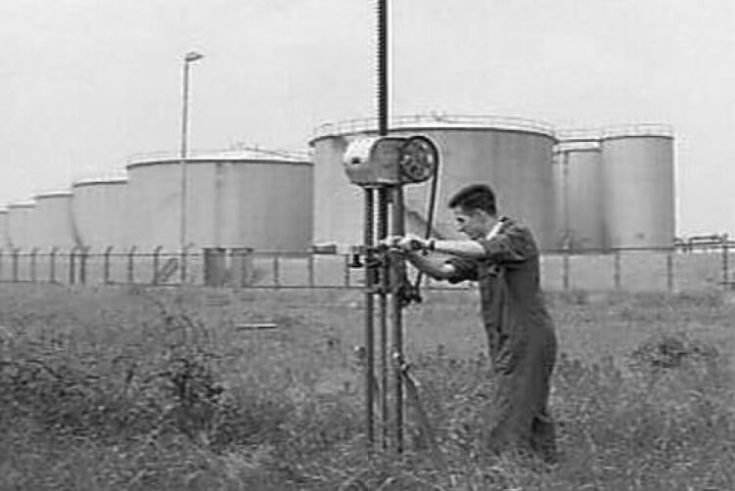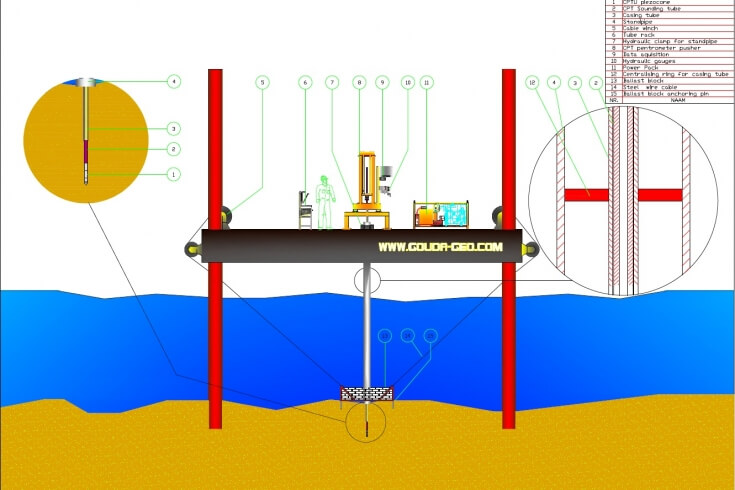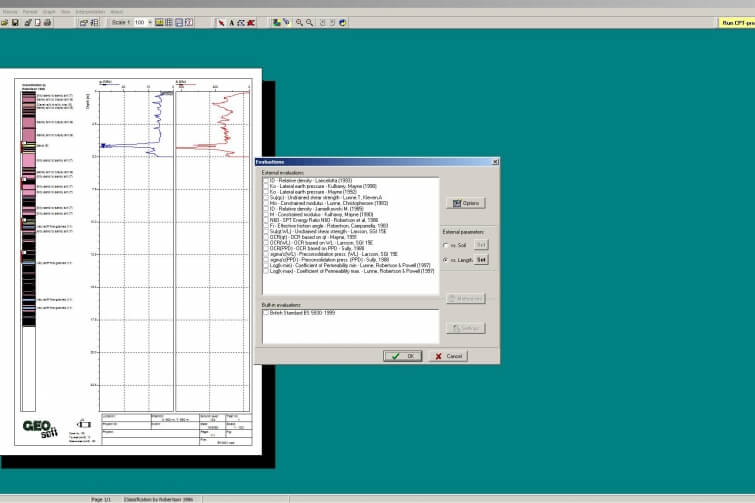Cone Penetration Testing (or CPT in short) is a fully standardised (see chapter Geotechnical Standards) and worldwide accepted technique for geotechnical soil investigation; i.e. that kind of soil investigation that’s done in order to determine the bearing capacity of the soil. It is primarily used to investigate soft soils. With the results of Cone Penetration Testing it is possible to calculate accurately the geotechnical properties or bearing capacity of the soil and consequently the minimum requirements for the foundations of buildings, constructions and alike.
Background Information on CPT
- The CPT Technique
- Testing Procedure
- Data Obtained
- What Can the Data be Used for?
- CPT Applications and Solutions
- Why Using CPT?
The Cone Penetration Testing technique is based on pushing a probe (a purely mechanical of instrumented cone tip) statically (so not hammered or rotated) into the ground at a constant penetration speed of 2 cm/s on the end of a string of tubes. Measurements can either be done continuously whilst penetrating the ground or intermittently depending on the CPT system one is using.
The Cone Penetration Testing procedure starts with a levelled horizontal pushing platform from which the cone is driven statically into the soil as vertically as possible at a constant penetration speed of 2 cm/s. The CPT data can either be recorded manually (in case of mechanical CPT testing with a hydraulic measuring head or a measuring head with LCD read-out) or fully automated recording of CPT data (e.g. electrical CPT testing). The total resistance is since the 1950-ies no longer an engineering parameter since it is too much subject to influences that can’t be quantified. It is therefore that this parameter is not to be taken into account.
The base method of Cone Penetration Testing provides engineering parameters, such as the cone resistance, the local sleeve friction, the deviation from the vertical axis (inclination), the pore pressure. Other, more specific, parameters can be obtained by means of adding extra measuring modules on top of the electric (piezo-)cone. All data obtained are synchronised with depth. Please note that when the cone deviates from the vertical axis, the length of the string of CPT sounding tubes does no longer correspond with the penetration depth and data have to be corrected for that deviation.
The data obtained from Cone Penetration Testing can be used for soil stability studies, the determination of the soil stratigraphy, the soils bearing capacity, the calculation of foundations, the effect of dynamic activities (e.g. traffic, large machinery) on the soil, environmental purposes, and alike.
The Cone Penetration technique is not only used to determine the geotechnical properties of the soil, the stratigraphy and the soils bearing capacity. The same direct push technique can also be used for soil, gas and water sampling, pore pressure (in-situ water pressure) measurement, the placing of soil heat exchangers and piezometer standpipes, the determination of the soil dynamic properties (seismic CPT), the search for war remains, determination of the depth foundation piles have been driven, length of sheet-piles, location of ground anchors by means of the magnetometer, and dielectricity, conductivity and acidity measurements. Even today more applications are developed based on the same direct push technique.
Cone Penetration testing is a rapid and worldwide accepted soil investigation technique that provides in its standard guise a wide array of highly accurate, depth correlated engineering data, that enables the geotechnician to calculate the geotechnical properties of the soil investigated, to delineate the soil stratigraphy and to determine its bearing capacity.
The extra sensors available on the market provide even more information on e.g. the dynamic properties of the soil, the presence of obstacles, remains of war, various kinds of pollution, and alike.
For more background information on Cone Penetration Testing we strongly recommend you to read the book Cone Penetration Testing in Geotechnical Practice written by Tom Lunne, John J.M. Powell, and Peter K. Robertson.







